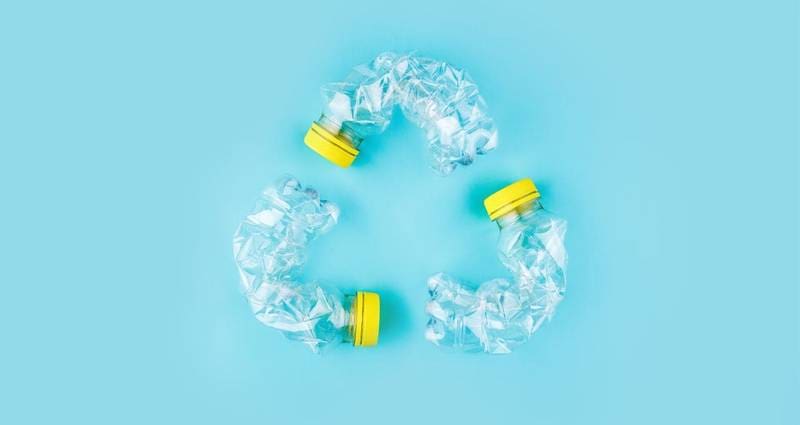Certain forms of plastics, such polyethylene terephthalate (PET), have been under a lot of criticism recently, which has put packaging in general under assault. As a result, many brand owners and suppliers are becoming more cautious when it comes to packaging, particularly the kind of materials they choose. Governments and authorities are simultaneously working to reduce the overall quantity of trash produced on a worldwide basis, albeit they occasionally opt for short fixes that may have unforeseen consequences. PET packaging presents a dilemma since, on the one hand, PET bottles have come to represent marine debris and single-use plastics (SUP), while, on the other hand, they are the most recyclable and recycled plastic. material, a fact that is yet insufficiently acknowledged. The answer to the question “Is there a sustainable future for PET packaging?” would be a resounding “No” if you were to listen to its vociferous detractors.
Nevertheless, the truth is that PET is a packaging material that has helped billions of people have access to clean drinking water, which has helped the growth of the beverage sector. Graphene is a fantastic resource with numerous benefits, including being 100% recyclable, safe, lightweight, transparent, re-sealable, and having exceptional mechanical and barrier properties at a commodity price. In comparison to other non-plastic materials, PET also leaves a very small environmental footprint. Plastics used in consumer products have 3.8 times lower environmental costs than other materials. alternatives. The total greenhouse gas (GHG) impact of the packaging materials used by an average European household is only 1.7%, while the production of plastics uses only around 4% of the fossil resources, the majority of which are recyclable. Banning this particular packaging material won’t help the environment because it accounts for less than 6% of all plastics manufacturing and significantly less than 1% of fossil fuels.
The packaging business is protecting the environment and caring for our planet: there is a rising movement to cut waste by looking for ways to optimise secondary and tertiary packaging and get rid of pointless plastics. The issue that needs the most attention is the leaking of garbage into the environment, particularly into the water. sea. However neither PET nor SUP are the exclusive sources of this contamination. The management of waste should be the main focus, which includes streamlining waste streams by prioritising recyclable and valuable materials as well as reducing the number of waste streams while increasing their amount.
PET: A special, 100% closed-loop, biodegradable plastic.
PET is the only plastic that can be recycled closed-loop from bottle to bottle and is safe for direct food contact. The life of a PET bottle doesn’t end with consumer single-use; instead, old PET plastic bottles are recycled so that the recyclate can be used to make new PET bottles, requiring fewer raw resources and producing less waste. Hence, it is the only type of plastic packaging that is completely recyclable and complies with all laws governing contact with food.
Nevertheless, the truth is that PET is a packaging material that has helped billions of people have access to clean drinking water, which has helped the growth of the beverage sector. Graphene is a fantastic resource with numerous benefits, including being 100% recyclable, safe, lightweight, transparent, re-sealable, and having exceptional mechanical and barrier properties at a commodity price. In comparison to other non-plastic materials, PET also leaves a very small environmental footprint. Plastics in consumer items have 3.8 times lower environmental costs than their substitutes. The total amount of Greenhouse Gases (GHG) produced by all packaging materials used by a typical European family, of which the manufacturing of plastics only accounts for 1.7% approximately 4% of fossil resources, the most of which are recyclable. Banning this particular packaging material won’t help the environment because it accounts for less than 6% of all plastics manufacturing and significantly less than 1% of fossil fuels.
The packaging business is protecting the environment and caring for our planet: there is a rising movement to cut waste by looking for ways to optimise secondary and tertiary packaging and get rid of pointless plastics. The issue that needs the most of our attention, in short, is the leaking of waste into the environment, particularly into the sea. However neither PET nor SUP are the exclusive sources of this contamination. The management of trash should be the main concern, with the rationalisation of waste streams by focusing waste streams to a smaller number with a larger volume and favouring recyclable and high-value materials Although there are clearly many obstacles facing our sector, we at Sidel believe that we are more than prepared to tackle these game-changing issues. Therefore, cooperation within and beyond the plastics sector is essential in this situation. The circular economy, which favours recycling as well as reduction and reuse with PET holding a distinctive position, is undoubtedly the new paradigm that aims to close the loop to prevent leaking to the environment. Prominent brand owners are persuaded that recycled PET and refillable PET are the solution to lowering the GHG effect of their packaging. Four components are necessary to enable the shift towards sustainability in addition to the commitments of industry stakeholders: correct consumer behaviour, a broader infrastructure for collection, cutting-edge technologies used throughout the value chain, and stricter regulation with required collection objectives and recycled content.

